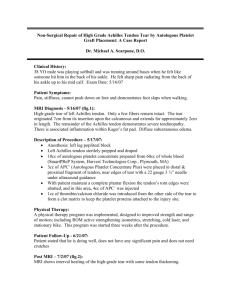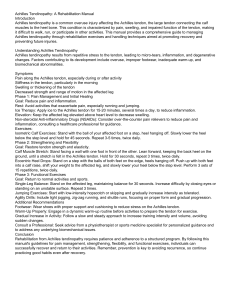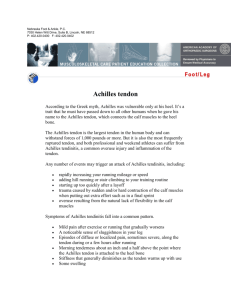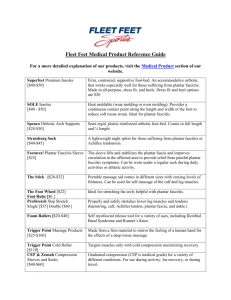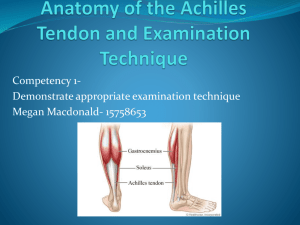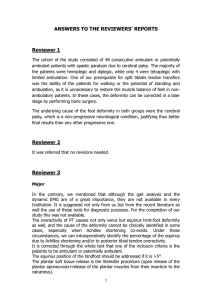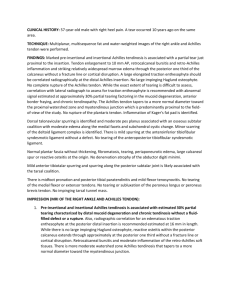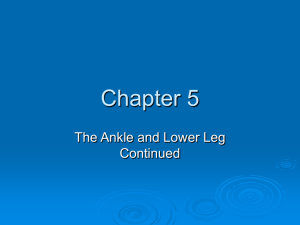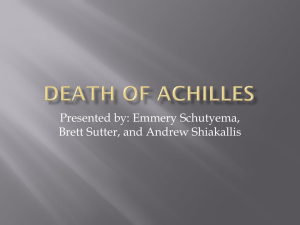MRI OF THE LEFT ANKLE
advertisement
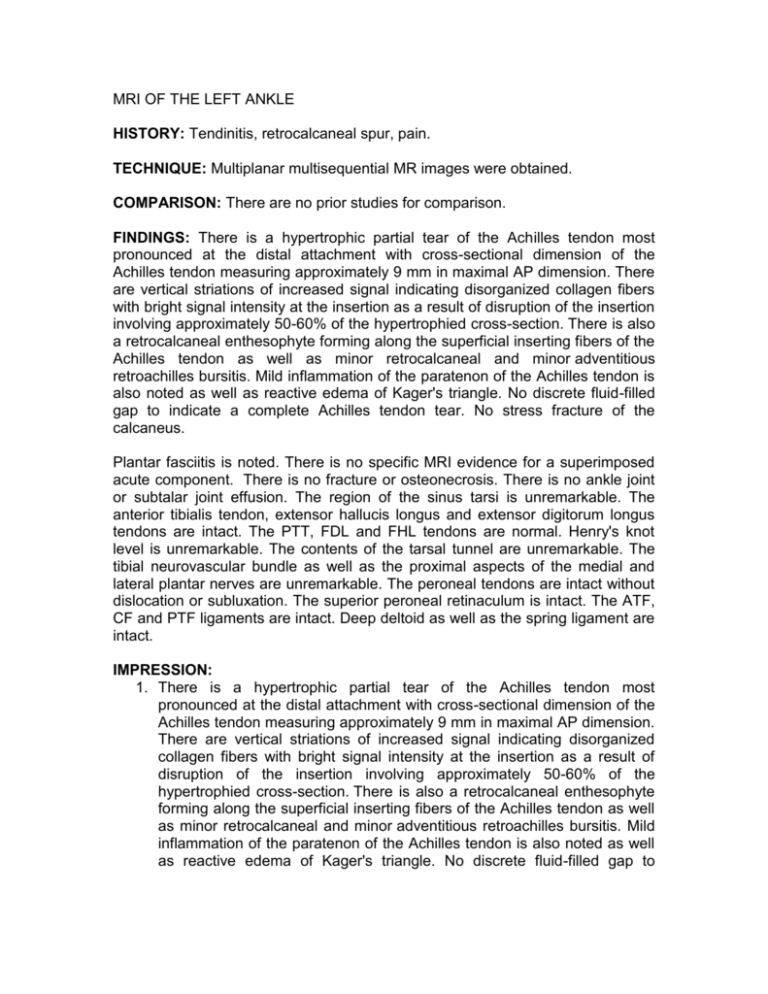
MRI OF THE LEFT ANKLE HISTORY: Tendinitis, retrocalcaneal spur, pain. TECHNIQUE: Multiplanar multisequential MR images were obtained. COMPARISON: There are no prior studies for comparison. FINDINGS: There is a hypertrophic partial tear of the Achilles tendon most pronounced at the distal attachment with cross-sectional dimension of the Achilles tendon measuring approximately 9 mm in maximal AP dimension. There are vertical striations of increased signal indicating disorganized collagen fibers with bright signal intensity at the insertion as a result of disruption of the insertion involving approximately 50-60% of the hypertrophied cross-section. There is also a retrocalcaneal enthesophyte forming along the superficial inserting fibers of the Achilles tendon as well as minor retrocalcaneal and minor adventitious retroachilles bursitis. Mild inflammation of the paratenon of the Achilles tendon is also noted as well as reactive edema of Kager's triangle. No discrete fluid-filled gap to indicate a complete Achilles tendon tear. No stress fracture of the calcaneus. Plantar fasciitis is noted. There is no specific MRI evidence for a superimposed acute component. There is no fracture or osteonecrosis. There is no ankle joint or subtalar joint effusion. The region of the sinus tarsi is unremarkable. The anterior tibialis tendon, extensor hallucis longus and extensor digitorum longus tendons are intact. The PTT, FDL and FHL tendons are normal. Henry's knot level is unremarkable. The contents of the tarsal tunnel are unremarkable. The tibial neurovascular bundle as well as the proximal aspects of the medial and lateral plantar nerves are unremarkable. The peroneal tendons are intact without dislocation or subluxation. The superior peroneal retinaculum is intact. The ATF, CF and PTF ligaments are intact. Deep deltoid as well as the spring ligament are intact. IMPRESSION: 1. There is a hypertrophic partial tear of the Achilles tendon most pronounced at the distal attachment with cross-sectional dimension of the Achilles tendon measuring approximately 9 mm in maximal AP dimension. There are vertical striations of increased signal indicating disorganized collagen fibers with bright signal intensity at the insertion as a result of disruption of the insertion involving approximately 50-60% of the hypertrophied cross-section. There is also a retrocalcaneal enthesophyte forming along the superficial inserting fibers of the Achilles tendon as well as minor retrocalcaneal and minor adventitious retroachilles bursitis. Mild inflammation of the paratenon of the Achilles tendon is also noted as well as reactive edema of Kager's triangle. No discrete fluid-filled gap to indicate a complete Achilles tendon tear. No stress fracture of the calcaneus. 2. Chronic plantar fasciitis.

